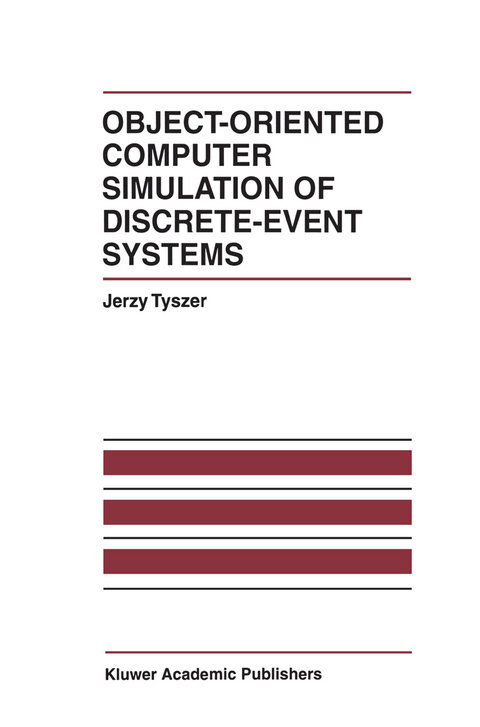
Object-Oriented Computer Simulation of Discrete-Event Systems
Springer-Verlag New York Inc.
978-1-4613-7287-5 (ISBN)
Object-Oriented Computer Simulation of Discrete-Event Systems demonstrates the basic and generic concepts used in computer simulation of discrete-event systems in a comprehensive, uniform and self-contained manner.
1 Getting started.- 1.1 Basic notions.- 1.2 Manual simulation.- 1.3 Activity scanning.- 2 Event scheduling.- 2.1 Main paradigm.- 2.2 ABC approach.- 2.3 Events versus activities.- 3 Event lists.- 3.1 Doubly linked linear list.- 3.2 Indexed linear list.- 3.3 Henriksen’s list.- 3.4 Two-level indexed list.- 3.5 Heaps.- 3.6 Splay trees.- 3.7 Run-time efficiency of event scheduling.- 4 Process interaction.- 4.1 Basic operations.- 4.2 Environment in C++.- 4.3 Distributed simulation.- 5 Random number generators.- 5.1 Uniform random variables.- 5.2 Statistical tests.- 5.3 Non-uniform variate generation.- 6 Design of simulation experiments.- 6.1 Validation of models.- 6.2 Analysis of variance.- 6.3 Linear regression.- 7 Collection and analysis of simulation results.- 7.1 Gathering of results.- 7.2 Transient phase characteristics.- 7.3 Estimation of steady-state phase characteristics.- 7.4 Variance reduction methods.- 8 Examples of simulation models.- 8.1 A simple preemptive system.- 8.2 A system with priorities and group servers.- 8.3 Assembly line.- 8.4 Finite-population queuing model.- 8.5 Satellite communication system.- 9 Epilog.- 10 Exercises.- A Probability distributions.- A.1 The standard normal distribution.- A.2 The Student’s t distribution.- A.3 The chi-square distribution.- A.4 The F distribution.- A.5 The Kolmogorov-Smirnov distribution.
| Erscheint lt. Verlag | 26.10.2012 |
|---|---|
| Reihe/Serie | The International Series on Discrete Event Dynamic Systems ; 10 |
| Zusatzinfo | XIV, 258 p. |
| Verlagsort | New York, NY |
| Sprache | englisch |
| Maße | 155 x 235 mm |
| Themenwelt | Mathematik / Informatik ► Informatik ► Programmiersprachen / -werkzeuge |
| Informatik ► Software Entwicklung ► Objektorientierung | |
| Mathematik / Informatik ► Informatik ► Theorie / Studium | |
| Mathematik / Informatik ► Mathematik ► Angewandte Mathematik | |
| Wirtschaft ► Betriebswirtschaft / Management | |
| ISBN-10 | 1-4613-7287-9 / 1461372879 |
| ISBN-13 | 978-1-4613-7287-5 / 9781461372875 |
| Zustand | Neuware |
| Haben Sie eine Frage zum Produkt? |
aus dem Bereich


